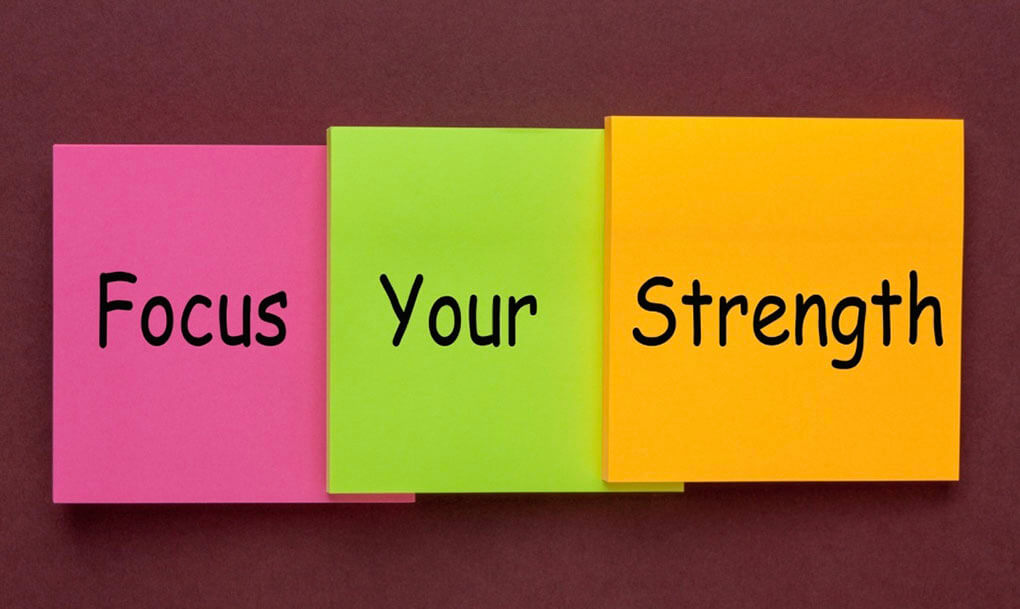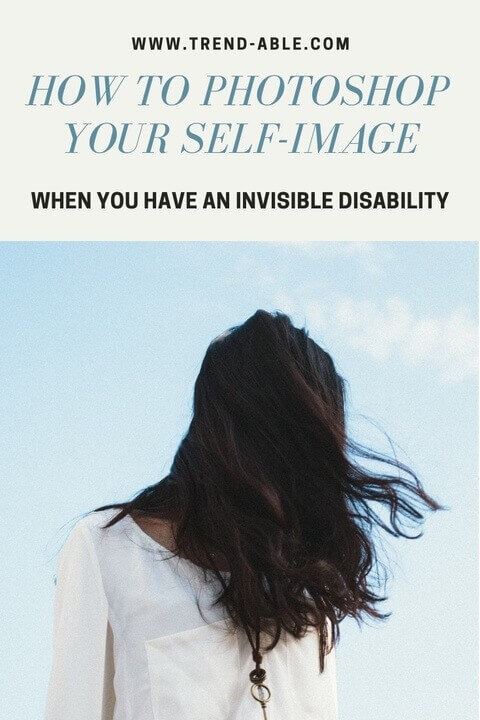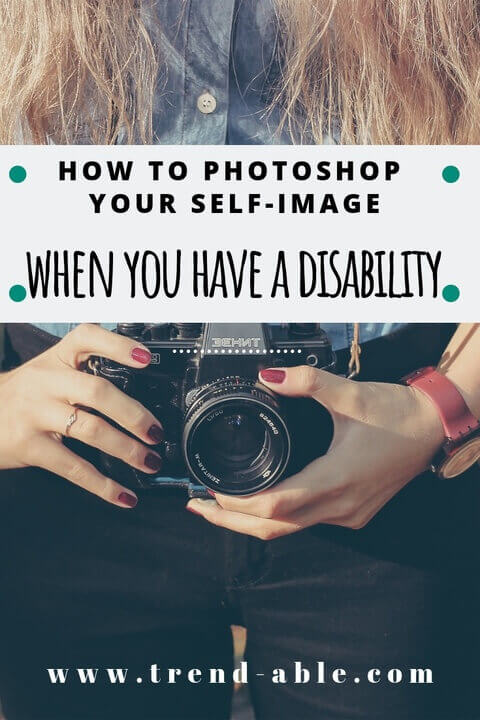Do you know how to be confident with a disability? If not, you need to! Do you remember when we had to have our photos developed before viewing the images? The days when selfies weren’t even a thing and group shots didn’t involve a million retakes? Back then, we had no way of knowing if our arms looked flabby or if our leg braces were showing in photos until we picked up the physical prints.
Today, we can not only instantly view our images. But we can also correct any and all perceived imperfections in them in seconds. With just a few taps and a free download, we can airbrush away wrinkles, tighten saggy jawlines, and even remove inches from our hips and thighs. Don’t want that scar to show in your profile picture? Voila! Gone!
Some of these tools can be fun to use! I’m kinda obsessed with making graphics for Trend-Able’s social media pages. The focus on perfecting one’s selfie makes it that much more challenging for those of us with disabilities. We need to learn to accept our imperfections and feel confident in our own skin.
I have recently received several emails from people following Trend-Able. They express feelings of shame and are embarrassed about having various disabilities. I read stories about being afraid to go places and do things they ”used to do”. They fear being judged. This got me thinking. At 2AM of course!
What if, instead of using these airbrush and photo editing tools to erase our perceived flaws, we use these same tools to permanently alter our thinking. Let’s stop trying to fool others into thinking we’re hotter or thinner than we really are. Let’s build confidence. Let’s create a more positive self-image. Good idea, right?
If you’re with me and want to photoshop a more confident and happier you, try using the following 6 step guide. And aren’t you curious if the metaphor will work?
Step 1: Uninstall Old Software
The first step is to delete all of the old stories that limit your thinking. They keep you from being the best version of yourself. These old stories are like playground bullies in your head. They are taunting you with negativity and telling you that no one likes you and that you aren’t good enough to play.
When I first got divorced and found myself back in the dating world at age 40, it was scary to say the least. My disease had progressed since I was last single in my twenties. Back then, I was not wearing bi-lateral leg braces and my fingers could manipulate buttons and grip loose change. For more on this, see my post on Dating with An Invisible Disability.
Because of my fears of the unknown, I created a negative story in my head. I felt that ”no one good would ever want me because of my disabilities”. In order to find love again, I had to erase the negative thinking and old stories that were getting me stuck. When I met my now husband, I had created a new story. This was, ”the right person will love me for me and not care about my physical limitations.” Obviously, it worked! I scored big time! My husband is kind, generous, handsome, over 6’ tall, with a full head of original hair – a rare commodity in the Jewish and over 40 dating pool.
Step 2: Assess The Image Objectively

People with high self-esteem know who they are. They play up their strengths and accept the less than ideal parts of themselves that cannot be changed. Just as I will never be a 6-foot long-legged supermodel, I’m also unlikely to ever run (or walk) a marathon. I also won’t become a math whiz. Our self-assessments should be based on the people we are today. Not those based on older, ”pre-disability” versions of ourselves who once could….
When evaluating your overall image, try to think about how others would describe you. What would a friend say your best attributes are? Do skills come naturally to you and not to your friend? What things are you not so good at? Try looking at yourself objectively, both your good and not so good attributes.
Step 3: Decide On The Focal Point & Highlight The Shit Out Of It

After looking at the big picture and knowing yourself, you can then decide what attributes you want to be the focus. Do you receive compliments about your sparkly eyes or genuine smile? Are you a great singer or a talented writer? Which of your inherent qualities and attributes are you most proud of? Once you decide on the features you like about yourself and feel proud to display, put everything else in the background.
We may not be able to control our disabilities, but we can control our personal style. We can learn how to be confident with a disability! This is what Trend-Able.com is about. The clothing and accessories we put on our bodies communicate who we are and have a huge impact on how others see us. Most importantly they communicate how we see ourselves. Just because I wear leg braces and have sucky hands does not mean I have to wear clunky looking grandma shoes and elastic waisted pants. Your disabilities do not have to define you.
HOW TO BE CONFIDENT WITH A DISABILITY!
Try choosing only clothing and shoes that you love and feel confident in. Play up your best assets with great fitting fabrics, color, and fun accessories that show your personality. Simple changes like, parting your hair a different way, or buying a new shade of lipstick, can be simple confidence boosters. If you want to learn how to use highlighter like a Kardashian or do your makeup better, you can sign up for a free makeover at Sephora and Ulta.
If doing your hair is an issue due to fatigue or limited arm strength, look for salons offering $ 20-weekday blowouts, or try using tools like a hands-free blowdryer stand or heated straightening hairbrush. The point is that when it is physically possible, get up, get dressed, and get out. You will feel more confident if you make the effort to sparkle and put yourself in the front and center of the image. Simple things can help you learn how to be confident with a disability!
Step 4: Use Natural Lighting & Transparency

You don’t need special effects or fancy filters. Your image looks best without distractions or fake enhancements. For the record, a little Botox and chemical peel need not be considered enhancements. True authenticity is about knowing who you are and what you stand for.
Real people can laugh at themselves and accept compliments without self-deprecation. They do not need to add silly stickers or emojis as gifts or bribes to gain acceptance from others. Authentic people know their value and always show up as themselves. They know how to be confident with a disability.
Once you know who you are and what you stand for, it’s time to show the real you in the image. Authenticity takes bravery. Some people with disabilities hide who they are from others because they worry about being thought of as weak and rejected. They are afraid of being vulnerable and coming off as ”needy”. But, in reality, the opposite is true. People respect and want to be around people who are real. And they can tell when you know how to be confident with a disability!
If you aren’t quite there yet, the good news is that authenticity can be practiced and learned. Try sharing your unedited feelings and stories with the people you like and trust. Smile as often as possible and make genuine eye contact with everyone you encounter. The more real and open you appear, the more attractive and relatable you become.
Step 5: Crop Out Comparison & Negativity

If you followed the previous four steps, then you are almost ready to hit publish. But before doing so, make sure to crop out any leftover negativity and comparison. There is and always will be people who are prettier, cooler, thinner, funnier, less disabled, smarter, more talented, more successful, nicer, and so on….than you. Once you accept this, move on. Everyone has stuff.
Life is not all rainbows and unicorns when you have a disability. It is not easy to think positively when you have chronic pain or struggle to complete the most basic of tasks. I mean, you can’t just flip a switch and turn lemons into lemonade when even the physical act of squeezing the lemon itself requires assistance.
Positive thinking isn’t easy, but making every effort you can to focus on the things you have and things you can do, will prevent you from becoming the ”angry disabled person” that no one wants to be around.
If you’ve completed the previous steps, then you already have the tools you need to push through the negative thinking and reset your image. When I feel myself spiraling into negativity land, I tell myself, ”Lainie, calm your shit down…You have done hard things before. It will be ok.” And guess what? After a 5-minute temper tantrum, a few deep breaths, and a glass of rose’, it usually is. Finally, I encourage you to learn how to be confident with a disability. You’ll be so glad you did!
Step 6: Download New Updates Frequently

We are all works in progress. Just when you think you’ve got it figured out and feel confident with the overall image, life will change in an instant and photobomb the entire picture. The final step is to live the best life you can today. Let your image be what it is and don’t waste any energy on how it woulda been or coulda been.
Having a physical disability has probably already changed your life and will continue to do so.
In order to be the best versions of ourselves, we have to take risks and work through the kinks every new update brings. With greater self-confidence and a positive self-image, comes the ability to design around challenges, adapt, and evolve.
Remember, your image is one of a kind and not on the Cloud. Don’t forget to hit save and backup your hard work!






How true this is, it’s just me I get so frustrated when I can’t do the simplest of things..then get cross with myself , I must try harder and laugh at my self instead..it’s so hard.. but I will try…thanks for your words x
Lainie – we used to talk on Facebook about all of the awesome suggestions for shoes and AFOs. You had mentioned a product you were going to dive into and now I can only assume it was the T-shirts that I’ve seen. We did not get to speak on the phone like planned, but I am still interested if you are. Life does get in the way as well as our own self-image, which you graciously recognized in your blog post. We can do great things together if we can get together digitally!
Hi Sonya,
Thanks for writing! I would still love to collaborate and yes, life does get in the way. Do you still follow the Page? Let’s definitely talk. No, the t-shirts were not it…I put a hold on a dressing tool due to prototype costs. Right now I’m working on all the speaking engagements in October. Once that ends, I am really open. Hope all is well. ??
I thoroughly enjoyed reading this new blog. You truly are a gifted writer and always hit the nail head on. I am a relatively new AFO wearer thanks to CMT and it has been very hard for me to accept and share with others. I love reading your posts and I am truly thankful to you for starting Trend-Able! You are my inspiration, as I am sure you are for many others. I hope that I can meet you in person one day!
Tracy,
You made my night & day again after reading. I cannot tell you how much I appreciate you and your awesome comment. I hope we can meet sooner than later too ?❤️
Love this metaphor! Thank you for the encouraging insights.
Cassie, I just saw this. Thank you ??
Wow Lainie, you hit this one right out of the park! Thank you for your uplifting inspiration. I’m currently reading “The Power of Now” by Eckhart Tolle. ‘Now’ is truly all we have!
Oh Christine, I would love your cliff notes of the book when done ?. Thank you for that awesome comment on this post. I truly appreciate it. ??
Thanks, Lainie, for my daily dose of positivity! Love you! ?
Anything for you Marianne ??. Love u back
Well said, Lainie! You are beautiful inside and out. Thank you!
Stephanie, Right back at ya! Thank you so much for taking the time to comment. So sweet. ?
I LOVE this!!!! Funny thing is, it holds true for everyone, not just those with a disability. “Live the best life you can live today”. ?
Well said! That’s really all any of us can do disabilities or not. Thanks Donna ?
Lainie, this is one of your best! As always thanks for your wisdom & great tips.
Thank you Amy! ❤️❤️❤️